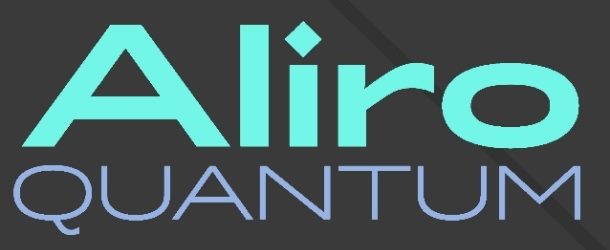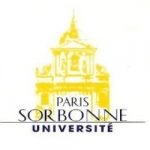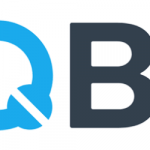Aliro Wants to Make Quantum Hardware More Accessible for Software Developers and Network Engineers; Narang Discusses Q.COMPUTE and Q.NETWORK.

(TechRepublic) Dynamic Developer’s Bill Detwiler interviews Dr. Prineha Narang, Assistant Professor at the John A. Paulson School of Engineering and Applied Sciences at Harvard University and CTO and co-founder Aliro Quantum about how the company is trying to make quantum more accessible with cloud technology. The interview is lengthy and available in audio and text and a highly recommended read or listen.
Dr. Prineha Narang began by explaining her personal background starting with her PhD at Caltech where she started to think about how do light and matter interact and how do we describe that from a computational perspective. Fast forward a few years, she found that almost every big supercomputer that we run calculations on today, whether it’s for 2D materials, whether it’s for nanophotonic interactions, whether it’s for interesting new topological materials, all of that is on actually GPU accelerated supercomputers. So, that just ended up being really good timing. As she was doing that, the fields of quantum computing was just about getting to that point where people said, “Hey, one of the first applications of quantum computers could be in thinking about describing these quantum interactions, thinking about whether they’re molecules, whether they’re materials.”
So, that’s when she first came to MIT. SHe says, ” And now, of course, I’m a faculty at Harvard. I started talking to faculty here, and they said, ‘Yeah, let’s think about these various architectures’.”
Bill Detwiler: I mean, it sounds like it was born out of a lot of that work you were doing there in the theoretical space because you wanted to be able to test things and do experiments using… You had to use the computers to do those, and you needed faster and faster and larger computers to be able to do them at a level that was precise enough to replicate maybe what
******
Bill Detwiler: Yeah. So let’s jump to what you’re doing with Aliro. And you’ve got two products, projects. Two things you’ve got, you’ve got Q.COMPUTE and Q.NETWORK. Since we’ve been talking about quantum computing, let’s do the Q.COMPUTE first. Tell me about what that is, what it does, how it works.
Dr. Prineha Narang: “Aliro is a startup that spun out of my group. They were very, very motivated students who worked with me, who said, “Hey, we’re trying to compute stuff on IBM’s device. And we’re also trying to do things on other quantum computers out there.” And something they realized very, very organically is that you don’t want to develop everything for one architecture, one type of computer, and then had to figure out how you’re going to put it over to everything else. I guess it’s something we take for granted in classical computers, right? That I can always write once and run anywhere. And that just wasn’t true and remains incredibly hard for quantum computers. So that’s probably the biggest problem.”
“. . . .So part of our motivation at Aliro in introducing this product is that every software engineer out there, every future quantum software engineer out there shouldn’t have to learn everything about five different types of hardware.. So it’s not only learning a new language, you actually have to figure out how to map your entire problem over. And it may or may not be actually possible to directly map that problem over. That is an enormous barrier for people out there to overcome if they want to get into quantum computing. So that’s exactly the problem that we want to solve and are trying to solve at Aliro.”
Bill Detwiler: So you need that abstraction layer, right? You need that layer to interface between what the developers, the programmers, the research, or whatever they’re trying to do, and actually translate in that back into the language to set of instructions that the machine can use. And is that what Q.COMPUTE does?
Dr. Prineha Narang: That’s what Q.COMPUTE does. Another thing, when we think about abstractions a question that comes up is, are you losing performance? So is that the trade-off? It turns out that’s not the case. Our product actually allows you to not only do optimizations at the circuit level and at the decomposition level, but also at the pulse level. So many of these hardware providers have given access. And this is literally at the pulse level. This is as close to the hardware as you can get. It turns out that because the hardware is at the moment limited, you can do some Q tricks at the pulse level. You can make some optimizations that allow you to increase the coherence time. And that actually allows you to directly compute larger problems, have deeper circuits more to qubit gates, which is something that people really want for these more complex problems. So, that’s the…
Bill Detwiler: Cool. So talk to me about the different languages that it supports right now, because I know one of the ones listed is the some of the open source stuff, like QASM.
Dr. Prineha Narang: QASM. Yeah.
Bill Detwiler: How can people who want to take advantage of Q.COMPUTE from Aliro do that? What’s the first step?
Dr. Prineha Narang: So the first step is for them to upload something that looks like a circuit, right? So something that is in whether they’re thinking about gates that are native to superconducting or to trapped-ions. . . .
And the advantage of that is that to a user, perhaps like yourself, you can write down the most inefficient circuit and yet be able to run it. And you don’t have to personally think about, “Oh, maybe I could do this in a slightly different way or try it on a simulator before going to the product.” Because the other thing the product does, it gives you a list of simulators, both a noiseless and noisy simulators that you might be able to run on immediately, say if you were trying to figure out what it would do on a superconducting versus a trapped-ion system.
Dr. Prineha Narang: Yeah. Or you go out there and say, “Aha, it seems like my very big complex problem requires me to have access only on the premium devices at IBM.” It’ll try and give you some of those optimizations. And also tell you if you run it on noisy simulator, “Hey, it seems like the circuit is… …
Bill Detwiler: I mean, I think most people are at very beginning stages of realize or understanding how this might be applicable to their specific business or their specific research problem.
Dr. Prineha Narang: Exactly.
Bill Detwiler: What do you think the industry needs to do beyond, I guess, what you’re doing to help beyond the hardware, beyond making it cheaper, faster, more accessible, but I guess to help people understand how best you can apply quantum computing to problems that you have, right?
Dr. Prineha Narang: Right. Exactly.
Bill Detwiler: So we’ve talked about optimization problems. We talk about encryption a lot. We were talking about materials experimentation doing on a computer, theoretical experimentation there. What are some other ways that you see quantum computers being used in the future maybe more at scale?
Dr. Prineha Narang: Yeah. So we expect that there will be a set of problems that you would want to solve, part of it on a classical system and part of it on a quantum system, and identifying what those problems are, identifying what part of it can actually be done very efficiently classically, and what’s the crux of it that you want to do quantumly is something that I think that the industry is really moving towards. What I’m saying implicitly is that a lot of attention goes towards the hardware needs to get better, but actually a lot of effort needs to go towards what algorithms can be run in the near term. I’ll give you a concrete example of this.
IBM released this amazing roadmaps, very similar to what the roadmap that Google and folks have had internally, though they haven’t made it public yet. And there are other roadmaps of trapped-ion systems. And then you ask people, “Okay. So what exactly will we be running when we get to that 127 qubit device or 427 qubit device?” That is still a long ways from fault tolerance, that’s still a long ways from something that it does everything magically, but it is much, much larger than anything you could meaningfully simulate on a classical system. So how would we know that the algorithm is actually doing what you expected to? What is a good benchmark? What is good verification? And those are all problems that I think people are working towards solving on the algorithm side.
Bill Detwiler: Well, let’s switch gears and talk about the other product that Aliro has, which is Q.NETWORK. Now, this is something that I think is even maybe more, or how I should say, less well understood than maybe quantum computing, which is quantum networking. So talk to me about what you’re doing in that field.
Dr. Prineha Narang: Absolutely. So quantum networks are really, really, really exciting. And the way to think about it is that anytime you wanted to connect two quantum computers or two quantum devices in general, you would essentially be creating a very small scale quantum network. Okay. Now, of course, connecting two quantum computers that are next to each other has some implications.
A large-scale quantum network, however, would imply that I have a way of transferring a quantum state from point A to point B. And this is where things become a little bit difficult. When it’s local, it’s all fine. All I really need is a good way of getting fiber in, fiber out, maybe a step that then allows me to take the quantum state from a superconducting to photonic state and back to a superconducting state. When thinking about a large scale quantum network, the challenge is very different, and there’s a whole host of reasons to do this. Of course, security implications is the fact that you have truly an unhackable internet, but also ideas like you could do blind quantum computing. And the reason you do that is maybe you had a really particularly valuable circuit.
And as this implicit in thinking about quantum networks, there are security implications is something that is a national priority. It’s something that has bipartisan support, that this is an area where the U.S. should be investing. We’re a little bit lagging behind actually. There are big efforts and demonstrations that have come out of the EU, out of China and elsewhere.
Bill Detwiler: So if I hear you correctly, what you’re able to do with Q.NETWORK is help the telecoms or help companies, help whoever is interested in building one of these networks create a virtual model of that within the software simulation of that, and then figure out how to create one more efficiently or at the most efficient way than they can before they actually start digging up the ground, laying fiber cables running. So this is a way to test that before you pour billions of dollars into construction.
Dr. Prineha Narang: Exactly. And this is also recognizing that there are more hardware choices. Okay. This resembles very much the early days of classical networking as well, where everyone had a solution. It was a lot more custom than we have now. So the repeaters that are out there, there are various realiwhere we think that very, very detailed simulation and emulation products will give any company that wants to be the first to… Actually, any telecom company that wants to be the first to build this quantum network, a huge leg up, because if they’re trying to develop this simulation, emulation in-house, that itself will take them a few years.
Bill Detwiler: How far away do you think we are from actually being able to deploy a meaningful quantum network?
Dr. Prineha Narang: I wouldn’t have guessed. I would have said it’s a few months ago.
Bill Detwiler: But how far are we now from getting to period where the equipment is not commonplace, but is actually sort of tangible? There’s a commercial viable commercial market for this kind of networking equipment, where people are actually looking at laying cable in the ground and we’re installing. Current networking engineers, future networking engineers, are learning about how to polish the ends of your fiber cable, not blind yourself when you connect it, those kinds of practical steps to create this network. How close are we or far away are we from that?
Dr. Prineha Narang: Yeah, that’s an excellent question. And this is where I’ll give the candid, honest answer. I think testbed networks are in our very near future. . . I think that it’s crucial that our testbed efforts be incredibly successful and that people show why they made certain hardware choices. And if there were certain hardware choices that were wrong, that actually feed back into our models, into our emulation.
Bill Detwiler: What is one or two things that you think people who are current working in networking now, whether they’re engineers, whether they’re administrators, whether they’re at a higher level working at say the large equipment manufacturers, or even the telecoms, I mean, what are the things that they should be watching out for in the near future when it comes to quantum networking?
Dr. Prineha Narang: That’s an excellent question. I think my first suggestion to all of those people would be take a class in quantum information, get familiar with either the problems.
I think for people who are in roles that are leadership roles, CTOs out there, I’ll say keep an eye on the various demonstrations that are coming out of both these testbeds in the U.S. and the testbeds overseas.
So I think there is a spectrum of answers depending on who’s thinking about it. But yeah, for students out there, I encourage you to look at… There are more pedagogical papers out there about what is the quantum network, what’s the quantum internet, what will the quantum internet do for you. I’m writing something. I’m happy to share that with your viewers, happy to share it with you. Just read about it. And I think having that level of knowledge right now, as you see the announcements come in in the media, I think, we’ll all be follow what’s happening and keep up with the good developments.
Bill Detwiler: Well, where can listeners and viewers go to learn more about the work that you’re doing and what’s happening at Aliro?
Dr. Prineha Narang: Well, the Aliro website is perhaps the best spot for everyone to hear about what’s happening. Our products, if you’re interested in trying them out, if you’re thinking, “Hey, my company’s been looking for one of these products,” please go look at the website. It will give you instructions on who to contact within Aliro. They’ll get you set up with an account. Everyone is super helpful. If you’re interested in my research, my research group website, narang.seas.harvard.edu, please go check



















